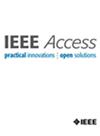Classification and Time-Frequency Localization of Arbitrary LPWAN Signals With Radial Deformable DETR
IF 3.4
3区 计算机科学
Q2 COMPUTER SCIENCE, INFORMATION SYSTEMS
引用次数: 0
Abstract
With the increasing adoption of Internet-of-Things (IoT) technologies, numerous devices utilizing protocols such as Sigfox and LoRa are now widely available inexpensively and operate in unlicensed ISM bands. However, challenges such as inventory management, unauthorized usage, and network performance must be addressed. Future adoption of emerging IoT protocols with various modulation schemes, bandwidth, and data rates can further complicate this. Therefore, it is important not only to classify but also to localize the frequency, bandwidth, and time of these LPWAN signals on the air for management, security, or band planning purposes. SOTA algorithms usually look through the whole received signal on the time domain or frequency domain only to perform classification tasks, without finding out the corresponding time-frequency location of the signal. This paper proposes to classify and localize time-frequency locations of LPWAN signals by an enhanced version of Deformable DEtection TRansformer (Deformable DETR). We devise an attention radius suitable for processing Low Power Wide Area Network (LPWAN) Spectrogram traces extracted from Software Defined Radios (SDRs) IQ data with Short-Time Fourier Transform (STFT). Inspired by Large Language Models (LLMs), sequences of STFT vectors from SDR IQs can leverage attention mechanisms, and finding out LPWAN signals in spectrograms is similar to object detection tasks in computer vision. Our method eliminates the need for hand-crafting CNN layers or signal processing pipelines for different LPWAN protocols provided that sufficient training samples are available. Therefore, we build a fully annotated dataset for Lora and Sigfox in multiple frequencies, bandwidths, packet data, and time, as well as data augmentation techniques that serve both training and validation datasets for our modified Deformable DETR model. The experimental results demonstrate an average precision of over 89.5% for LoRa signals and over 79.8% when mixed with ultra-narrow-band signals.求助全文
约1分钟内获得全文
求助全文
来源期刊

IEEE Access
COMPUTER SCIENCE, INFORMATION SYSTEMSENGIN-ENGINEERING, ELECTRICAL & ELECTRONIC
CiteScore
9.80
自引率
7.70%
发文量
6673
审稿时长
6 weeks
期刊介绍:
IEEE Access® is a multidisciplinary, open access (OA), applications-oriented, all-electronic archival journal that continuously presents the results of original research or development across all of IEEE''s fields of interest.
IEEE Access will publish articles that are of high interest to readers, original, technically correct, and clearly presented. Supported by author publication charges (APC), its hallmarks are a rapid peer review and publication process with open access to all readers. Unlike IEEE''s traditional Transactions or Journals, reviews are "binary", in that reviewers will either Accept or Reject an article in the form it is submitted in order to achieve rapid turnaround. Especially encouraged are submissions on:
Multidisciplinary topics, or applications-oriented articles and negative results that do not fit within the scope of IEEE''s traditional journals.
Practical articles discussing new experiments or measurement techniques, interesting solutions to engineering.
Development of new or improved fabrication or manufacturing techniques.
Reviews or survey articles of new or evolving fields oriented to assist others in understanding the new area.
 求助内容:
求助内容: 应助结果提醒方式:
应助结果提醒方式:


